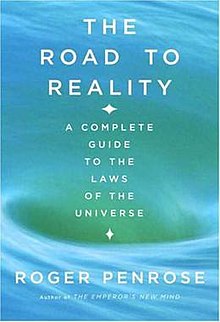Quantum gravity (QG) is a field of theoretical physics that seeks to describe gravity according to the principles of quantum mechanics. It deals with environments in which neither gravitational nor quantum effects can be ignored, such as in the vicinity of black holes or similar compact astrophysical objects, such as neutron stars.
In physics, string theory is a theoretical framework in which the point-like particles of particle physics are replaced by one-dimensional objects called strings. String theory describes how these strings propagate through space and interact with each other. On distance scales larger than the string scale, a string looks just like an ordinary particle, with its mass, charge, and other properties determined by the vibrational state of the string. In string theory, one of the many vibrational states of the string corresponds to the graviton, a quantum mechanical particle that carries the gravitational force. Thus, string theory is a theory of quantum gravity.

A theory of everything, final theory, ultimate theory, unified field theory or master theory is a hypothetical, singular, all-encompassing, coherent theoretical framework of physics that fully explains and links together all aspects of the universe. Finding a theory of everything is one of the major unsolved problems in physics. String theory and M-theory have been proposed as theories of everything.

In philosophy, philosophy of physics deals with conceptual and interpretational issues in modern physics, many of which overlap with research done by certain kinds of theoretical physicists. Philosophy of physics can be broadly divided into three areas:
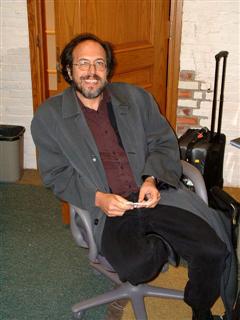
Lee Smolin is an American theoretical physicist, a faculty member at the Perimeter Institute for Theoretical Physics, an adjunct professor of physics at the University of Waterloo and a member of the graduate faculty of the philosophy department at the University of Toronto. Smolin's 2006 book The Trouble with Physics criticized string theory as a viable scientific theory. He has made contributions to quantum gravity theory, in particular the approach known as loop quantum gravity. He advocates that the two primary approaches to quantum gravity, loop quantum gravity and string theory, can be reconciled as different aspects of the same underlying theory. He also advocates an alternative view on space and time he calls temporal naturalism. His research interests also include cosmology, elementary particle theory, the foundations of quantum mechanics, and theoretical biology.
Julian Barbour is a British physicist with research interests in quantum gravity and the history of science.
In theoretical physics, quantum geometry is the set of mathematical concepts generalizing the concepts of geometry whose understanding is necessary to describe the physical phenomena at distance scales comparable to the Planck length. At these distances, quantum mechanics has a profound effect on physical phenomena.
The history of loop quantum gravity spans more than three decades of intense research.
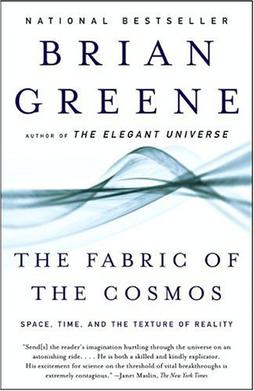
The Fabric of the Cosmos: Space, Time, and the Texture of Reality (2004) is the second book on theoretical physics, cosmology, and string theory written by Brian Greene, professor and co-director of Columbia's Institute for Strings, Cosmology, and Astroparticle Physics (ISCAP).

Peter Woit is an American theoretical physicist. He is a senior lecturer in the Mathematics department at Columbia University. Woit, a critic of string theory, has published a book Not Even Wrong (2006) and writes a blog of the same name.
Imaginary time is a mathematical representation of time which appears in some approaches to special relativity and quantum mechanics. It finds uses in connecting quantum mechanics with statistical mechanics and in certain cosmological theories.

The Trouble with Physics: The Rise of String Theory, the Fall of a Science, and What Comes Next is a 2006 book by the theoretical physicist Lee Smolin about the problems with string theory. The book strongly criticizes string theory and its prominence in contemporary theoretical physics, on the grounds that string theory has yet to come up with a single prediction that can be verified using any technology that is likely to be feasible within our lifetimes. Smolin also focuses on the difficulties faced by research in quantum gravity, and by current efforts to come up with a theory explaining all four fundamental interactions. The book is broadly concerned with the role of controversy and diversity of approaches in scientific processes and ethics.
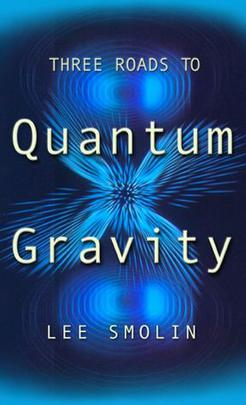
Three Roads to Quantum Gravity: A New Understanding of Space, Time and the Universe is a non-fiction book by American theoretical physicist Lee Smolin. The book was initially published on May 30, 2001 by Basic Books as a part of the Science Masters series.

General Relativity is a graduate textbook and reference on Albert Einstein's general theory of relativity written by the gravitational physicist Robert Wald.
Sundance Osland Bilson-Thompson is an Australian theoretical particle physicist. He has developed the idea that certain preon models may be represented topologically, rather than by treating preons as pointlike particles. His ideas have attracted interest in the field of loop quantum gravity, as they may represent a way of incorporating the Standard Model into loop quantum gravity. This would make loop quantum gravity a candidate theory of everything.
In non-technical terms, M-theory presents an idea about the basic substance of the universe. As of 2022, science has produced no experimental evidence to support the conclusion that M-theory is a description of the real world. Although a complete mathematical formulation of M-theory is not known, the general approach is the leading contender for a universal "Theory of Everything" that unifies gravity with other forces such as electromagnetism. M-theory aims to unify quantum mechanics with general relativity's gravitational force in a mathematically consistent way. In comparison, other theories such as loop quantum gravity are considered by physicists and researchers/students to be less elegant, because they posit gravity to be completely different from forces such as the electromagnetic force.
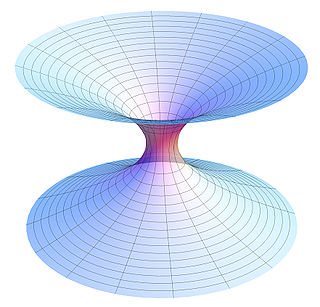
Theoretical physics is a branch of physics that employs mathematical models and abstractions of physical objects and systems to rationalize, explain and predict natural phenomena. This is in contrast to experimental physics, which uses experimental tools to probe these phenomena.
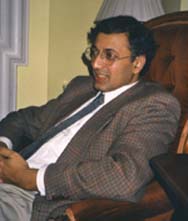
Shahn Majid is an English pure mathematician and theoretical physicist, trained at Cambridge University and Harvard University and, since 2001, a Professor of Mathematics at the School of Mathematical Sciences, Queen Mary, University of London.
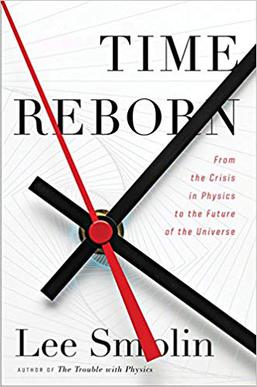
Time Reborn: From the Crisis in Physics to the Future of the Universe is a 2013 book by the American theoretical physicist Lee Smolin.
In theoretical physics, the problem of time is a conceptual conflict between general relativity and quantum mechanics in that quantum mechanics regards the flow of time as universal and absolute, whereas general relativity regards the flow of time as malleable and relative. This problem raises the question of what time really is in a physical sense and whether it is truly a real, distinct phenomenon. It also involves the related question of why time seems to flow in a single direction, despite the fact that no known physical laws at the microscopic level seem to require a single direction. For macroscopic systems the directionality of time is directly linked to first principles such as the second law of thermodynamics.
